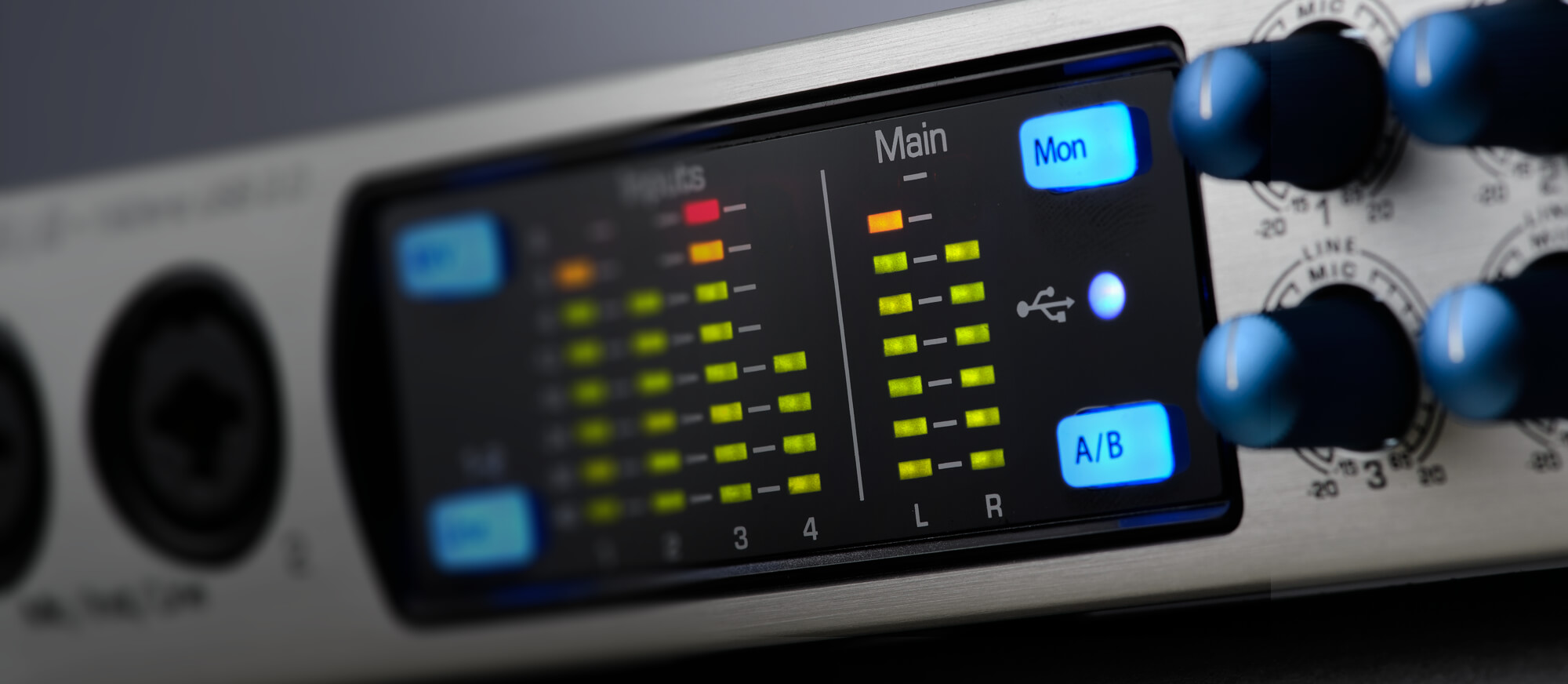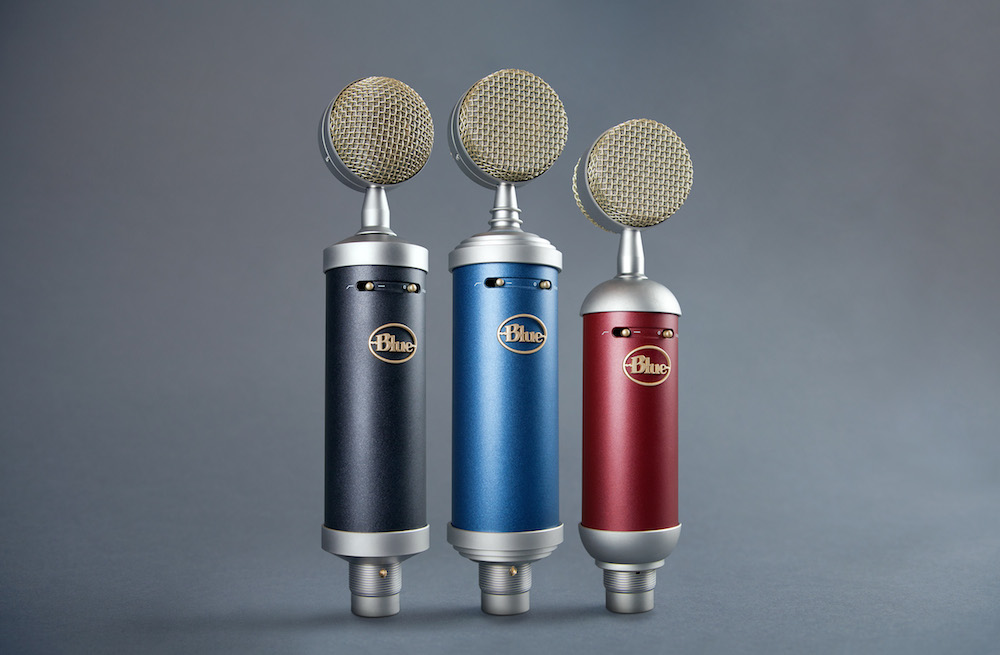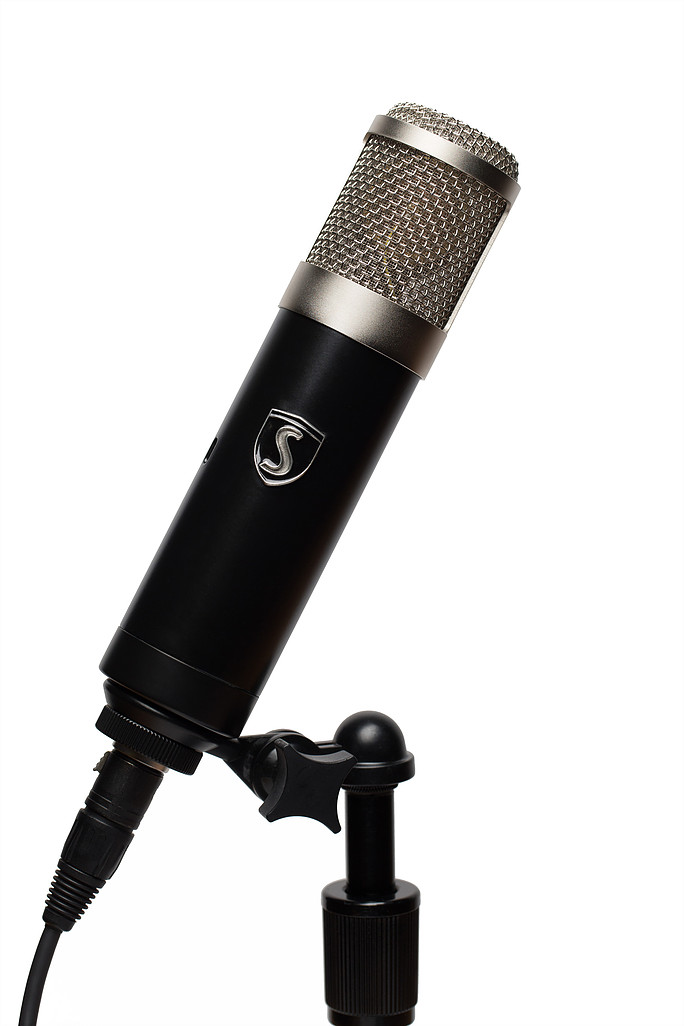New Gear Alert – NAMM 2017 Edition: UA’s Apollo Twin Duo Successor, New Mics from Blue and Lewitt, and Much More
NAMM 2017 is officially here, and we at SonicScoop are excited to spread the word about all of the awesome new gear hitting the market in honor of the big event. Here are several featured items (for now!) debuting at the convention. Stay tuned for next week’s roundup to see even more NAMM-related gear announcements.
Interfaces
Universal Audio announces Apollo Twin Duo MkII.
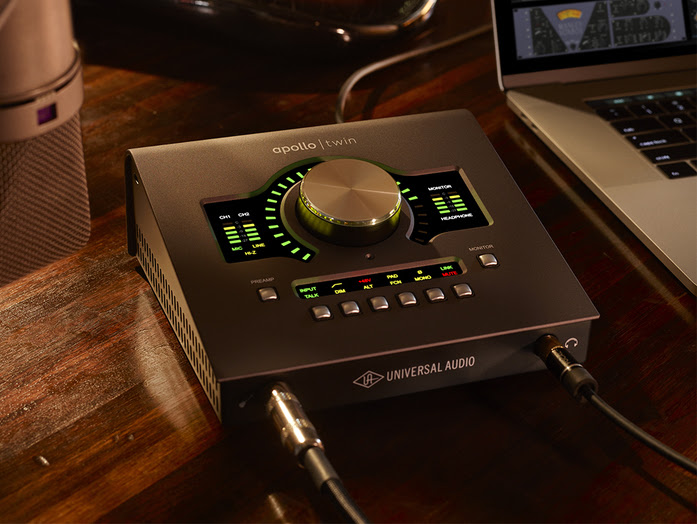
The Apollo Twin Duo MkII features improved monitoring capabilities along with other new and exciting updates.
Featuring onboard Realtime UAD-2 SOLO, DUO, or all new QUAD processing, this portable, compact, and lightweight 2×6 Thunderbolt audio interface improves upon the original Apollo Twin’s audio quality with redesigned A/D and D/A conversion — offering increased dynamic range and ultra-low THD.
The Apollo Twin MkII also features Unison™ technology, which allows its dual mic preamps and front-panel DI to sound and behave like the world’s most sought-after tube and solid state preamps, guitar amps, and stompboxes — including their impedance, gain stage “sweet spots,” and circuit behaviors.
In addition, Apollo Twin MkII offers improved monitor functionality versus the original Apollo Twin — with Mute, Dim, Mono, and Alt speaker switching. It also includes monitor remote controls and a built-in talkback mic for easy communication with talent.
The interface includes Universal Audio’s “Realtime Analog Classics” UAD plug-in bundle, featuring legacy editions of the LA-2A Classic Audio Leveler, 1176LN Limiting Amplifier, and Pultec EQP-1A Program Equalizer, as well as the 610-B Tube Preamp & EQ plug-in, and Softube Amp Room Essentials.
Apollo Twin MkII is now shipping with an estimated street price of $699 (SOLO), $899 (DUO), and $1,299 (QUAD).
MOTU announces 3 new interfaces.
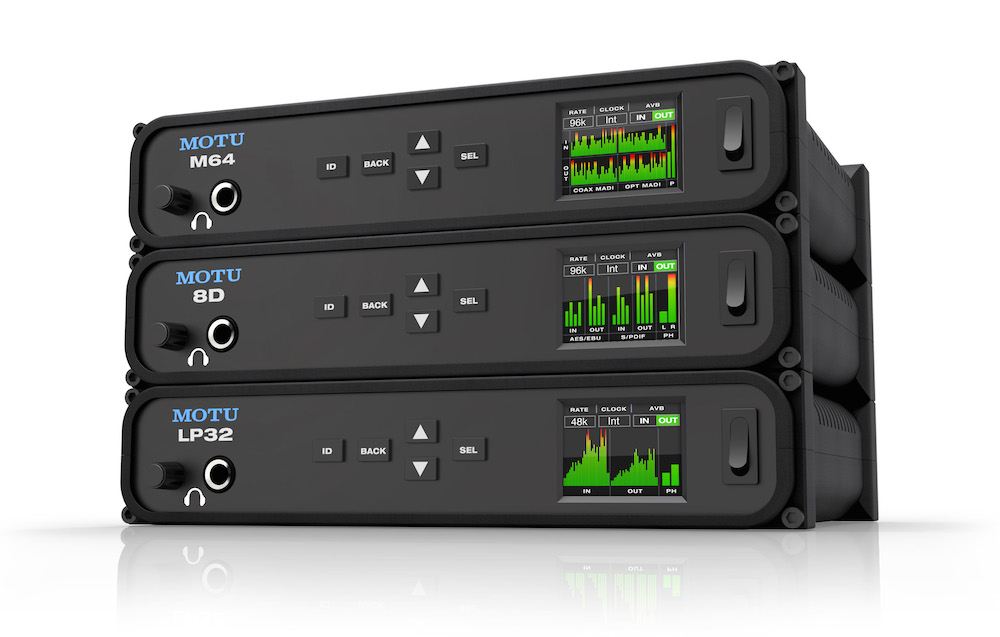
MOTU’s new line of interfaces offers extremely flexible routing options, among many other useful features.
MOTU is debuting three new audio interfaces: the M64, 8D, and LP32. With digital audio I/O configurations, flexible routing, stand-alone mixing and AVB/TSN networking, these units can connect to a host computer through high-speed USB 2.0 (compatible with USB 3.0 and iOS).
The M64 provides one bank of optical MADI I/O, plus a 2nd independent bank of coaxial MADI I/O on BNC connectors, for a total of 256 simultaneous MADI I/O channels. A duplicate BNC output is included for splitting the coax bank to two separate destinations, without the need for a separate splitter.
The 8D provides two stereo pairs (four channels) of AES3 digital I/O and two stereo pairs of RCA S/PDIF digital I/O, for a total of 8 digital I/O channels.
The LP32 provides four banks of 8-channel ADAT optical “lightpipe” digital I/O for a total of 32 channels at 44.1/48 kHz or 16 channels of SMUX at 88.2/96 kHz. Each I/O bank is individually switchable between 8-channel ADAT, 4-channel SMUX or stereo TOSLink (optical S/PDIF).
For all three units, powerful DSP delivers large console-style mixing with 48 channels, 12 stereo busses, and 32-bit floating point effects processing, including modeled analog EQ, vintage compression and classic reverb. The routing patches ins to outs, or splits input channels to multiple destinations. Each unit can be used as a stand-alone mixer with wireless control from a tablet, smartphone and laptop — even multiple smart devices simultaneously — over shared Wi-Fi.
The M64, 8D and LP32 ($595 each) will ship in Q1 of 2017.
PreSonus unveils the 2|6 and 6|8 interfaces.
Both interfaces record at up to 24-bit, 192 kHz resolution and feature PreSonus’ microphone preamps, audiophile-grade digital converters, low-jitter clocking, and MIDI I/O. As with all PreSonus recording systems, Studio-series interfaces come with the company’s Studio One® Artist DAW software for Mac and Windows.
The Studio 2|6 2×4 bus-powered audio/MIDI interface features two front-panel combo mic and switchable line/instrument inputs with +48V phantom power for condenser mics. In addition to the L/R main outputs, you get two balanced line outputs for monitor mixing, while LED meters indicate input and output levels. A Cue Mix A/B function lets you toggle between two mixes while monitoring through headphones.
The Studio 6|8 6-in, 6-out audio/MIDI interface sports 2 front-panel combo mic/line/instrument inputs and 2 rear-panel mic/line inputs. In addition to the L/R main outputs, you get two balanced line outputs for monitor mixing or speaker switching, plus S/PDIF I/O. A Cue Mix A/B function lets you toggle between two mixes while monitoring through headphones.
Both interfaces are available immediately at PreSonus dealers. Expected street prices are $199 for Studio 2|6 and $299 for Studio 6|8.
Microphones
Blue updates the Essentials series microphones and introduces two new sets of headphones.
The newly enhanced Essentials series now features Spark SL, Bluebird SL and Baby Bottle SL. Taking the popular microphone line one step further, Blue advances each mic with a new streamlined build and refined sonics, along with a versatile 100Hz high-pass filter and -20dB pad.
In addition, Blue has also announced two new headphones. New models include Ella, a planar magnetic headphone, and Sadie, a next-generation high-fidelity headphone. Both sets of cans feature custom, built-in audiophile amps.
Lewitt announces the dual-optput LCT 640 TS microphone.
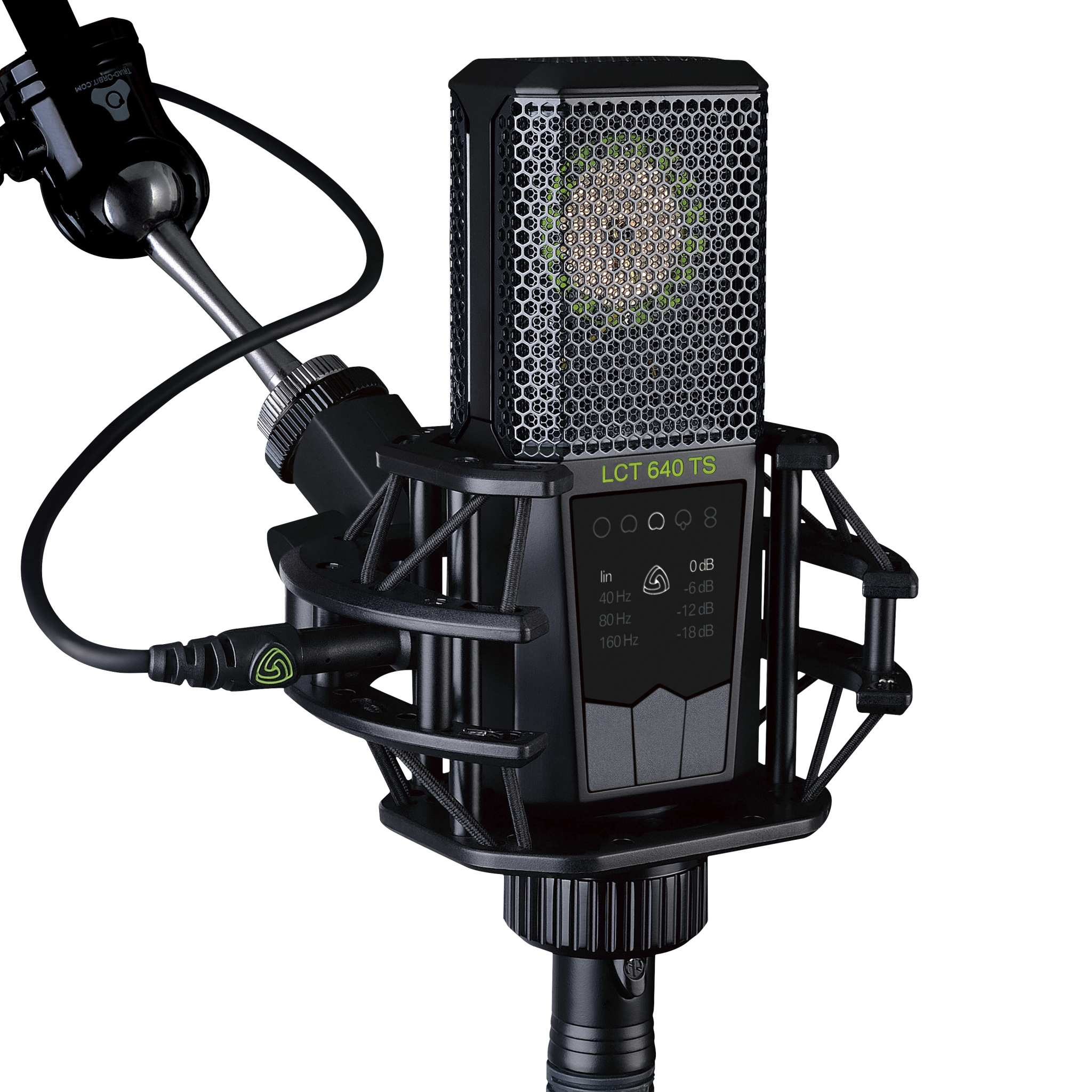
Change the polar pattern after recording with the Lewitt LCT 640 TS dual large diaphragm condenser microphone.
The LCT 640 TS is a large-diaphragm condenser microphone that features Dual Output Mode, made available by the microphone’s two independent circuits on its front and rear. Using Lewitt’s “Polarizer” plug-in, any desired polar pattern such as omni, wide cardioid, cardioid, supercardioid and figure-8 can now be selected after recording.
The LCT 640 TS makes it possible to rotate the microphone’s directivity by 180° after recording, and capturing in stereo with just one LCT 640 TS is selectable via Dual Output mode. LEWITT also guarantees that any two LCT 640 TS mics will always form a matched pair.
The LCT 640 TS is available now for around $899.
Soundelux USA Announces U99 Microphone.
Featuring a k67 dual symmetrical backplate dual membrane capsule along with the Soundelux USA “fat” switch featured on the U195 microphone and a new high frequency “boost-flat-cut” switch, the U99 has enough proximity effect to sound full, but not so much that it sounds “boomy.”
The U99 uses a “new old stock” tube and linear high current power supply. It also features a large output transformer to radically increase the low frequency headroom. The mic is hand-made in the USA and its components have been auditioned and selected for the best sound and lowest noise, not to satisfy a low cost spreadsheet. The mic comes with its own proprietary N470 power supply, six-pin XLR cable, and bottom thread shock mount.
The U99 carries a US MSRP of $2,599 and will be available in March 2017.
Additional Product Releases Include:
Cloud Microphones‘ Cloudlifter Zi Vari-Z Instrument DI and Mic Activator.
Cloud Microphones brings their popular Cloudlifter® Mic Activator® technology to guitar players, bass players, keyboard players and more with the introduction of the Cloudlifter Zi Vari-Z Instrument DI and Mic Activator. In addition to giving instrument players control over their tone and gain staging from the very front of their signal chain, the new CL-Zi retains all of the original Cloudlifter-Z features for adding clean gain to dynamic and ribbon microphones.
The Cloudlifter Zi uses phantom power from any preamp to solve an array of common issues with instruments and microphones, providing up to +25dB of ultra-clean gain for XLR microphones and Lo-Z sources and up to 12dB for 1/4″ instruments and Hi-z sources, via the Neutrik combination dual input connector and Hi-z to Lo-z Cinemag instrument transformer.
The CL-Zi’s variable impedance “Z” knob and high-pass filter work in tandem to create additional tone control in a unique way through the manipulation of impedance loading. With this feature, you can customize your tone before the gain stage of your signal path. The CL-Zi has a three-position gain switch, allowing you to choose which level of gain best suits your application.
The Cloudlifter CL-Zi will be available in spring of 2017 for $449 MSRP.
Eventide announces new multi-effect algorithm for their H9 Harmonizer® platform called PitchFuzz.
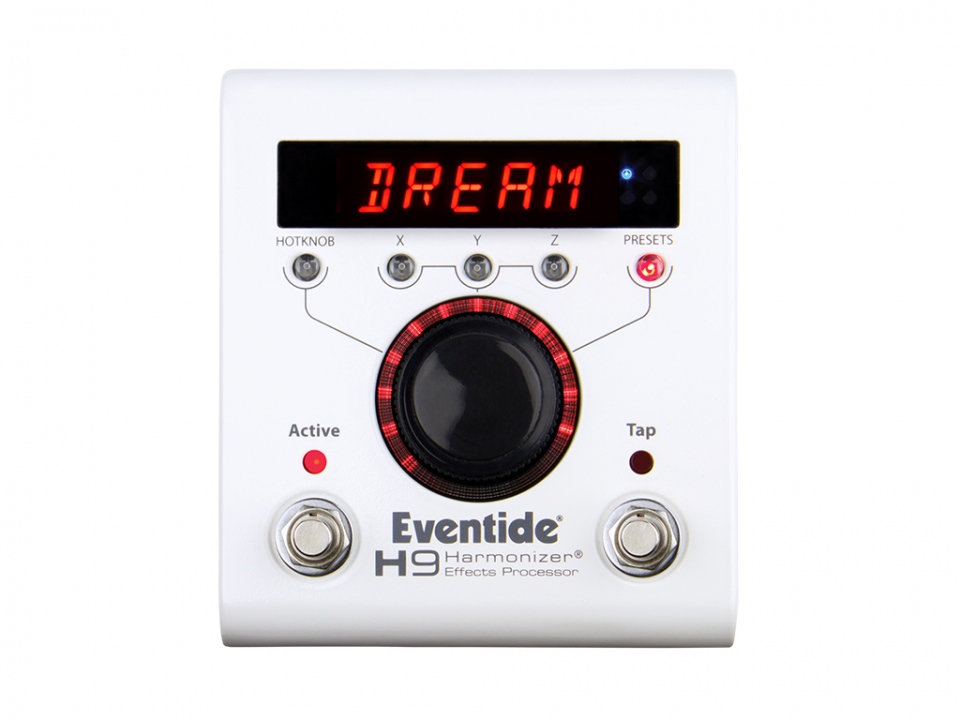
The H9 by Eventide is an ever-evolving platform to which new algorithms can continuously be applied for a seemingly limitless landscape of sounds.
Expanding the H9 platform, PitchFuzz combines delay, pitch-shifting and distortion. Representing Eventide’s unique take on the classic fuzz octaver, the three chromatic voices allow you to create virtual chords and route them before or after the fuzz and delay effects.
PreSonus Unveils Third-Generation StudioLive Series III Consoles.
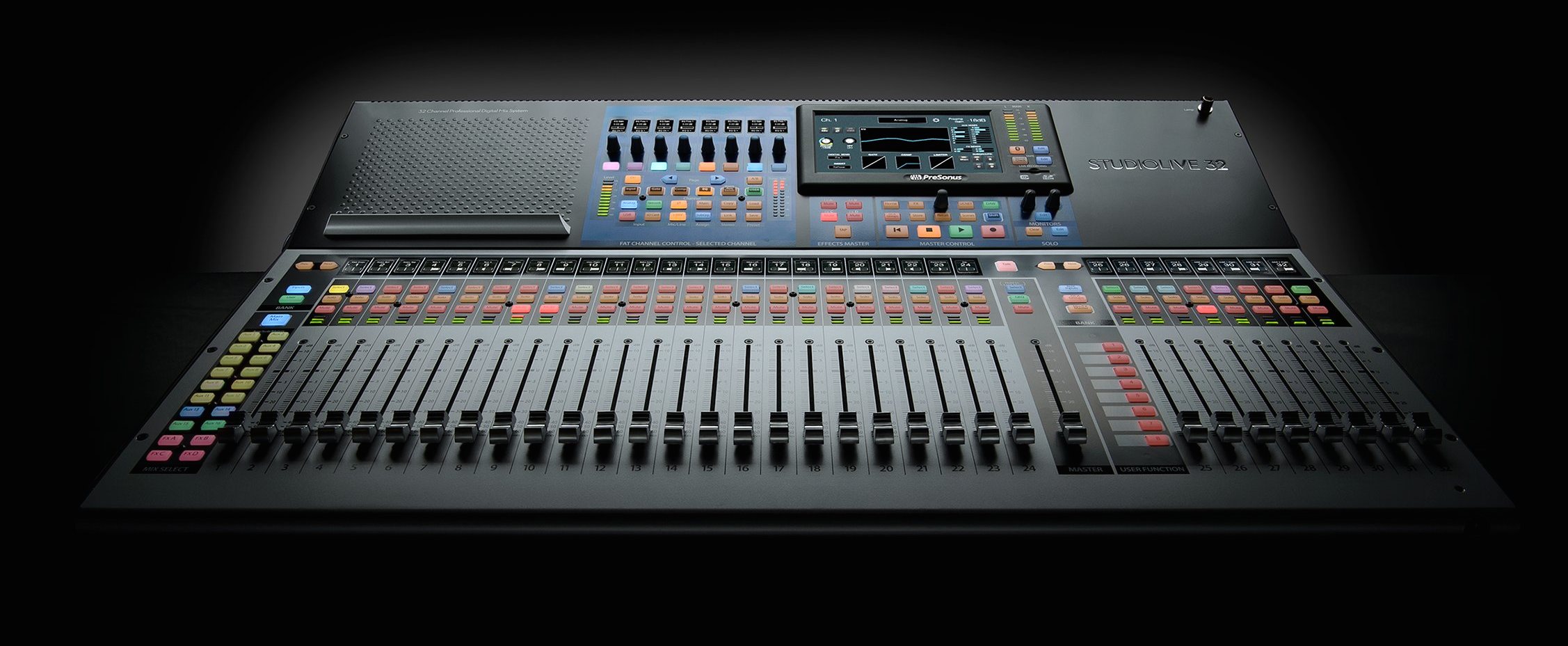
Leave your laptop at home when using the new StudioLive line by PreSonus, capable of recording into their Capture software, built into every desk in this line.
PreSonus’ new third-generation StudioLive® Series III digital console/recorders are fully recallable. The new series launches with two models: the 16-channel StudioLive 16, with 17 touch-sensitive, motorized faders and 17 recallable XMAX preamps and the StudioLive 32, with 33 touch-sensitive, motorized faders and 33 recallable XMAX preamps.
PreSonus Capture™ multitrack recording software is installed directly into StudioLive Series III consoles, so you can record up to 34 tracks to the StudioLive’s onboard SD recorder using their Capture software (included). When finished recording, open your Capture session in Studio One® for Mac and Windows, and the entire mix scene will transfer to your Studio One session, including fader levels and channel settings.
StudioLive 32 digital console/recorders are available immediately, with a street price of $2,999.95; the StudioLive 16 will ship later in Q1 of 2017 at an anticipated price of $1,999.95.
IK Multimedia announces iRig Acoustic Stage and iRig Pro I/O.
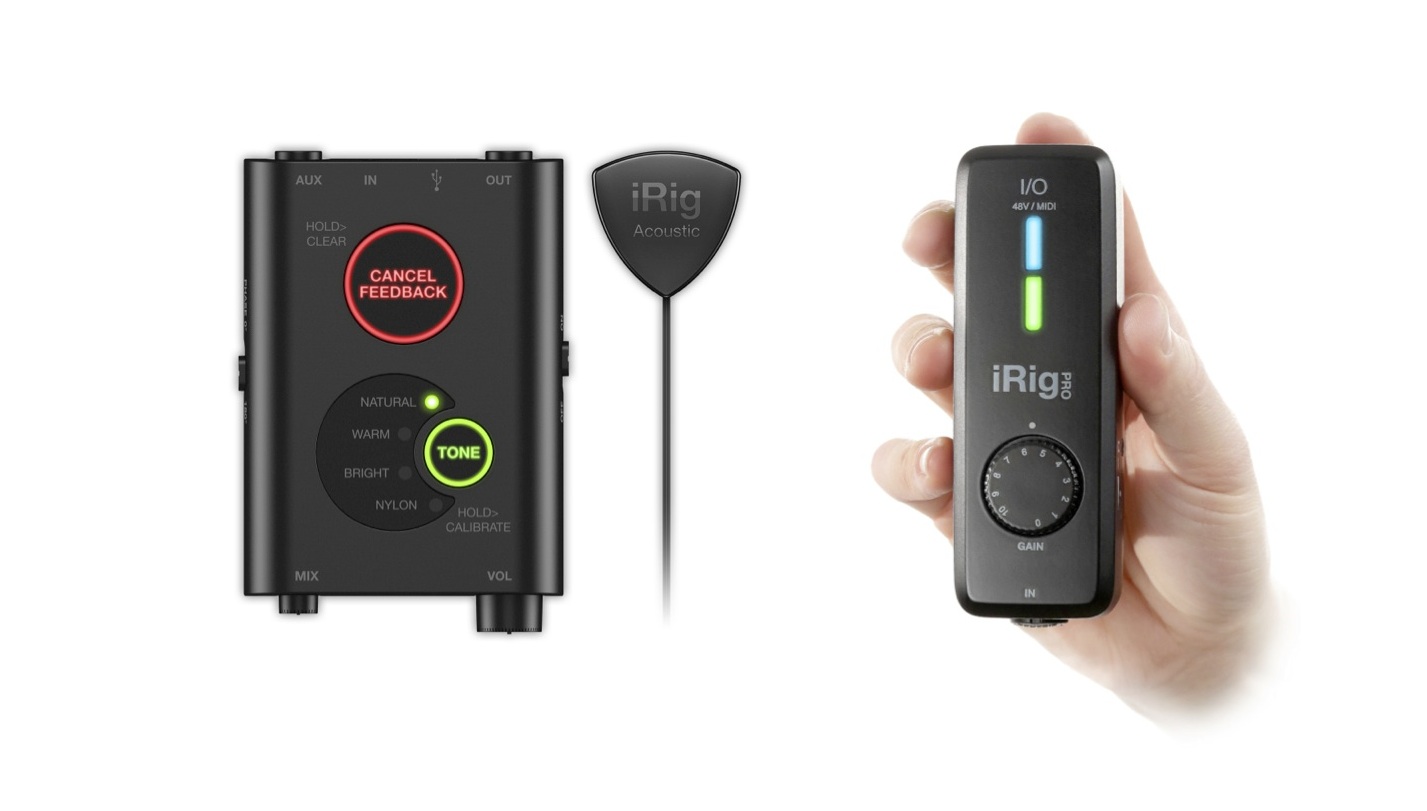
Get great studio-like sounds in live applications for your acoustic instruments with the iRig Acoustic Stage, and capture tracks into your mobile devices on-the-go with iRig Pro I/O.
iRig Acoustic Stage is a microphone, preamp and digital processor system that combines an advanced MEMS microphone which clips on to the sound hole of an acoustic instrument. There is a preamp and DSP unit that captures all the tone, vibe and “air” of the instrument when playing live or recording in home and project studios.
IK Multimedia’s patented system makes any acoustic guitar or other acoustic instruments like ukulele, acoustic bass, bouzouki, mandolin, etc…, sound as if they were captured with a classic recording studio setup, providing a studio-quality sound both on stage and in the studio.
iRig Pro I/O is the successor to the popular iRig Pro, the personal mobile audio/MIDI interface for iPhone, iPad, Mac, PC and Android devices. iRig Pro is a “plug and play” interface that lets musicians hook up all of their gear – guitars, basses, studio mics, vocal mics, keyboards and more – to their mobile devices or computers and record 24-bit/96kHz audio and MIDI tracks. iRig Pro I/O also includes MIDI input and output ports for extended connectivity. In addition to a bundle of included software, iRig Pro I/O comes with 2 x AA batteries, Mini-DIN to USB and Mini-DIN to Lightning cables, and two 5-Pin MIDI to 2.5mm cables for connection to standard MIDI gear.
iRig Acoustic Stage is available now for $/€99.99; iRig Pro I/O will be available in April, 2017 for $/€149.99.
Please note: When you buy products through links on this page, we may earn an affiliate commission.







